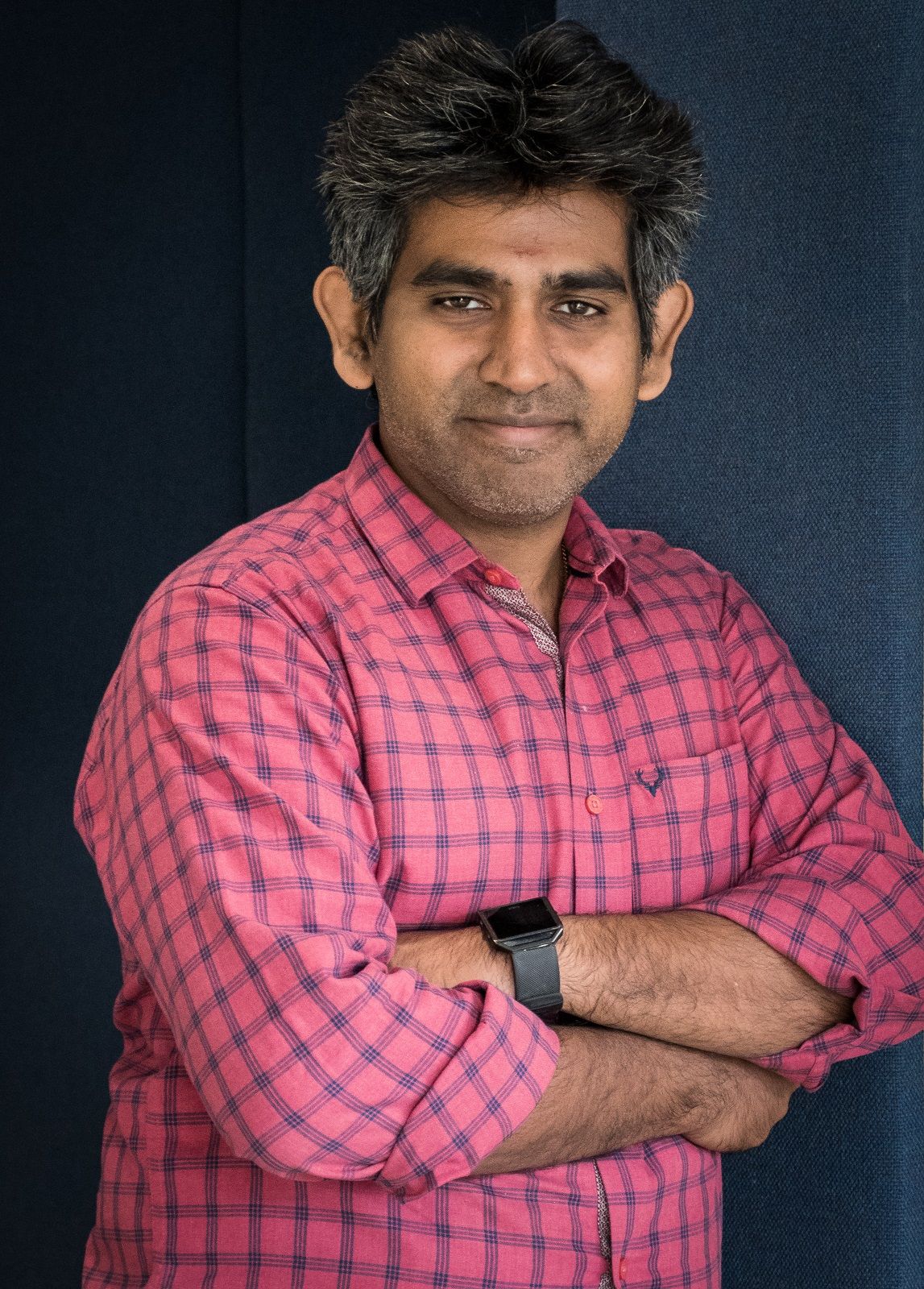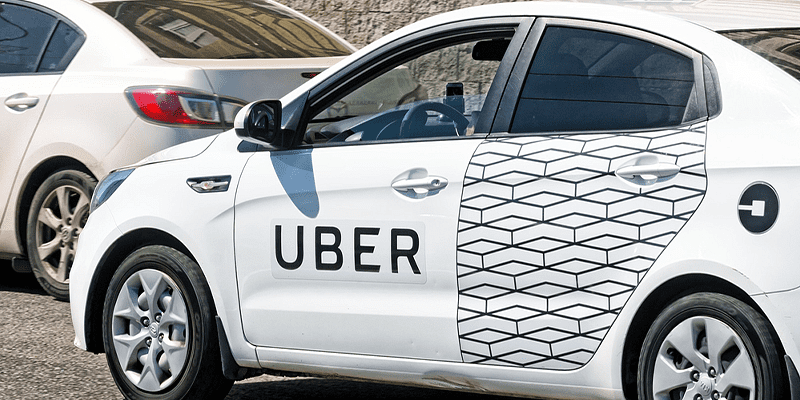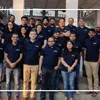While ride hailing app Uber’s main platform was built in San Francisco, the company’s two technology centres in India, in Hyderabad and Bengaluru, built Uber Lite, a simpler version of the app used globally.
Jayaram Valliyur, Senior Director, Core Technology at Uber, says,
“We are a customer focused company, leveraging technology to find solutions to the challenges people face. We listen to customer feedback continuously using various mechanisms like analysing our customer contacts for insights and observing customer service agent interactions.”
For Uber, this focus is what helps it get its products bang on target.

Jayaram Valliyur
Understanding the mandate
Manikandan Thangarathnam, Senior Director, Engineering, Uber, notes how the team’s first mandate was that Uber is a marketplace. “It’s a platform where drivers come looking for revenue, and riders come looking for solutions to travel. Beyond that, new parameters that came into play - compliance, pricing, tax structures - all posed a challenge for scalability,” he explains.
“Each country has its own transport model, and we needed to offer better solutions in a constructive manner. So, we took a step back, and reconsidered how we needed to build our system so that it could expand exponentially, but effortlessly. We decided to build a scalable system that could adapt to specific needs of each country or city. The model we chose for this was one that could adapt to changing needs, and one that was flexible enough to keep the growth coming. This backbone made it convenient for the launch of our next lines of business such as Eats,” says Mani.
Talking about product development, he says, they start with a set of problems that people face and look for ways to solve them. “Thanks to Uber’s large customer base, we can understand customer problems in depth.”
“As we have people on the ground across the world who provide us with specific inputs, we are able to build quick solutions and get feedback on those from our customers. Once we’ve done this, we go for a large-scale rollout. We started as a solution to make travel easier for people, and are now present across 71 countries, in over 10,000 cities. Our agile tech stack lets us seamlessly handle 16 million trips per day with over 101 million active users,” says Mani.
This platform-based approach to solutions across various global markets ensures features are available globally but enabled selectively as and when required.
New shifts
Uber’s platform allows easy configurability to adapt to local rules and nuances, which has enabled it to scale to over 70 countries, juggling several business models and regulatory requirements.
“The power of the platform helped us react quickly to new customer requirements and local authorities during the pandemic, like launching safety features such as mask verification, PPE kit distributions, video-based support for driver partners and courier partners, instead of having to visit physical locations,” Jay recounts.
During the pandemic, the team got back to the drawing board and used existing tech stacks to launch new verticals that were the need of the hour.
The rollout of prescription delivery in the US is an example. The team understood that access to medicines was imperative and worked hard to engineer a solution where residents could order their prescriptions directly from the Uber Eats app.

Manikandan Thangarathnam
“Thanks to the agility of our platform, we were able to scale such launches within just a few weeks, and can proudly look back at the 25 billion trips completed over the years. One of the interesting challenges at Uber is that each solution needs to be customised for each market.”
For example, ‘cash’ as a payment method was led predominantly by India, and the team engineered a way to make sure cash-driven countries could also use Uber effortlessly. Uber Lite is another example.
“We understand that there are developing countries where internet/device penetration isn’t very strong. Uber Lite was built to cater specifically to the needs of those markets. The product was built from India, serving as a prime example of how we build solutions for unique needs across the world,” adds Mani.
Building the MVP
For any new feature being developed, the team decides on the key success metrics at the time of design. Only when they have favourable metrics, do they scale it beyond the minimum viable product (MVP). For instance, when the team launches any new customer service automation flows, they want to see the agent contact rates decrease favourably, before they drive adoption of the new flow across cities and regions.
Mani explains this further,
“Uber Lite has helped us understand customers beyond the western countries, which in turn has helped us to build features that resonated most with the habits of a new set of customers who hadn’t experienced the ‘Uber magic’. One of the first noticeable changes was to make the ‘maps experience’ secondary (map-on-tap). Our customers in the emerging markets identify locations through Points of Interest (POIs) like prominent institutions, monuments or shopping centres.”
Uber cached these POIs and embedded these places to accelerate the search experience. Simplified, map-less and search-accelerated experiences unlocked value and adoption of the product for riders who weren’t very tech-savvy.
For optimised network usage, the team built a separate network layer with advanced techniques.
“We are obsessed with making our libraries lighter, making our core flows snappy. Native mobile user experiences were powered from the backend tech to keep the mobile app size very small. As we expanded into many regions - we also built regional features - such as Paytm wallet payments in India,” says Mani.
The duration of the MVP
The duration of the MVP depends on the feature/product that is being launched. Some metrics (churn, gross bookings etc.) take time to mature and we keep the MVP till then, validating the metrics before we scale it, explains Jay.
As part of building Uber Lite, the team developed a playbook of new ground up products and growing rider KPIs (key performance indicators) to get these almost at par with the flagship rider app. This inspired the team to build a strong growth engineering team in Bengaluru that learnt from Uber Lite and applied growth principles to the main Uber app, and multiplied impacts by 100x.
The technology behind Uber Lite also powers Uber Bus today, serving riders in Cairo and Kiev. Uber Lite continues to serve our riders but Bangalore’s focus has now shifted to bigger, more prominent bets in the space of HCV (high-capacity vehicles) and 3P (third party) products such as car rentals, micro-mobility and hailables/local cabs.
Understanding the need
Jay explains that the team looks at new offerings/features in phases and in particular regions, and continuously tests assumptions and customer feedback.
“Once we’re confident of the positive impact on our customers, we scale the feature broadly across other regions. In the fintech and customer obsession areas, we are developing many new products continuously from India, and we follow this very approach to launch new offerings,” adds Jay.
The first product that was built in the Rider team at Bangalore was Uber Lite. This was a uniquely engineered app that was under 5MB, targeted to increase access of Uber in large, under-served emerging markets such as India, other parts of South Asia, Latin America and sub-Saharan regions.
“Our research in these regions revealed that users in these markets have very different needs and habits,”adds Mani.
Based on this user research - they converged at building an MVP for a new Lite app that predominantly addressed three large needs:
- Simplify user experience, make it intuitive and map-less,
- Works in 2G network conditions consuming only one-fifth of data bandwidth, and
- Include features to keep Uber rides convenient and safe.
Starting as a full spectrum team with a small number of engineers, designers, product and data scientists, the Uber Lite team grew out to be a 20-member team as they scaled across 33 different countries over 15 months.
Understanding data
Mani says the team analyses a lot of data metrics to see how different cities function. He adds that over time, they realised the best way to improve user experience was by means of better data interpretation. Data, he adds, is one of their strongest differentiators, and helps them constantly understand evolving user needs.
“We have had several Eureka moments along the way. One such example during the initial years was when we were monitoring data to check if trips across cities showed any drop. We saw a sudden drop in traffic in some cities. Sitting in remote locations, it was confusing for us to see the drop, and we checked the issue to realise it was a public holiday in that country. We realised at that point that we needed to embed knowledge into our system to understand and adapt to city and country-level specific information,” adds Mani.
Maps are another example, as relying on them alone could make riders walk the last mile to their homes. This got them to adding technology and Machine Learning (ML) inputs to the existing maps.
“We are a global mobility solutions leader, and have implemented several growth hacks over the years to help the business grow seamlessly. The Rider Growth, for example, works to understand customer problems, and develops tech-based solutions for user experience. One such problem the team is working on is rider retention. The team realised that from the point of installing the Uber app, to finally getting comfortable around the product, there were some leaks in the funnel,” says Mani.
The team deciphered that if a rider took X number of trips in Y days, they were more likely to stay on the platform. They then did a string of experiments with some very innovative fixes to understand how riders reacted to them. The experiments were conducted through AB testing, understanding which changes impacted riders positively, and which didn’t. Through their series of interventions, the Rider Growth team managed to plug many holes in the funnel, making riders more likely to stay with them.
“This had a significant positive impact on the business, too. The Bengaluru-based Rider Growth team leads this function for Uber globally, and is one of the few such teams that are led out of India across companies,” adds Mani.

Working on a global scale
Mani and Jay explain that the team also watch for opportunities to upgrade to newer technologies. Moving to a newer platform or technology while supporting existing scale, availability and global nature is often challenging, so it needs to be executed in a phased manner.
“Obviously, Uber is a completely online platform. We have traffic 24x7, unlike a local bank for example. The most unique challenge for us is that there can be no downtime. We have had to let go of several legacy systems to be able to scale to meet global demand. The migration of technology from old to new is always an interesting challenge, and we work every day to adapt to newer infrastructure,” adds Mani.
For instance, the team initially launched on ‘Python’ but had to move to ‘Go’ because it was much more scalable.
“Our engineers are always looking to challenge the status quo. They use the metrics for systems, customer feedback or data, and newer technologies to drive these innovations. Many of our innovations have contributed back to the open-source community and we publish engineering blogs to detail the innovative work happening within the company,” says Jay.
He adds the team is now working on many new innovations across all areas. Many of these will apply ML or Artificial Intelligence (AI) algorithms to drive some fundamental changes.
“Mobility as an industry has started to witness disruptions, which are, however, not very mature yet. This domain will go through huge innovations in the coming years. Multiple companies and organisations will work in shaping this future. Uber, being an industry leader in this domain, will play a huge role in this evolution,” concludes Mani.
YourStory’s flagship startup-tech and leadership conference will return virtually for its 13th edition on October 25-30, 2021. Sign up for updates on TechSparks or to express your interest in partnerships and speaker opportunities here.
For more on TechSparks 2021, click here.
Applications are now open for Tech30 2021, a list of 30 most promising tech startups from India. Apply or nominate an early-stage startup to become a Tech30 2021 startup here.
Edited by Anju Narayanan
Link : https://yourstory.com/2021/09/product-roadmap-uber-india-product-thinking-technology-drive-innovation
Author :- Sindhu Kashyaap ( )
September 08, 2021 at 06:00AM
YourStory




